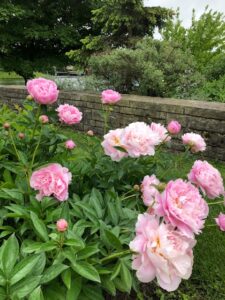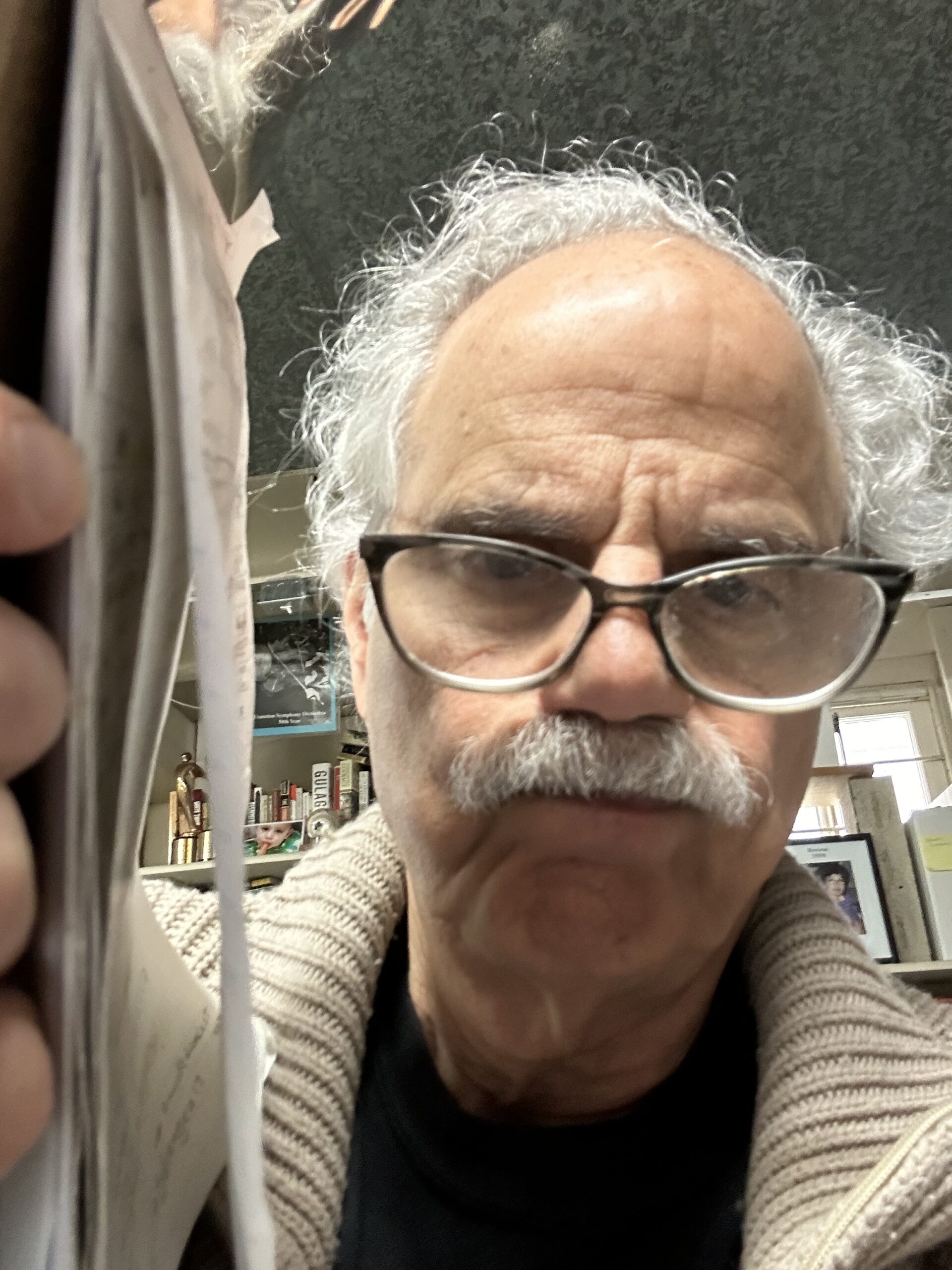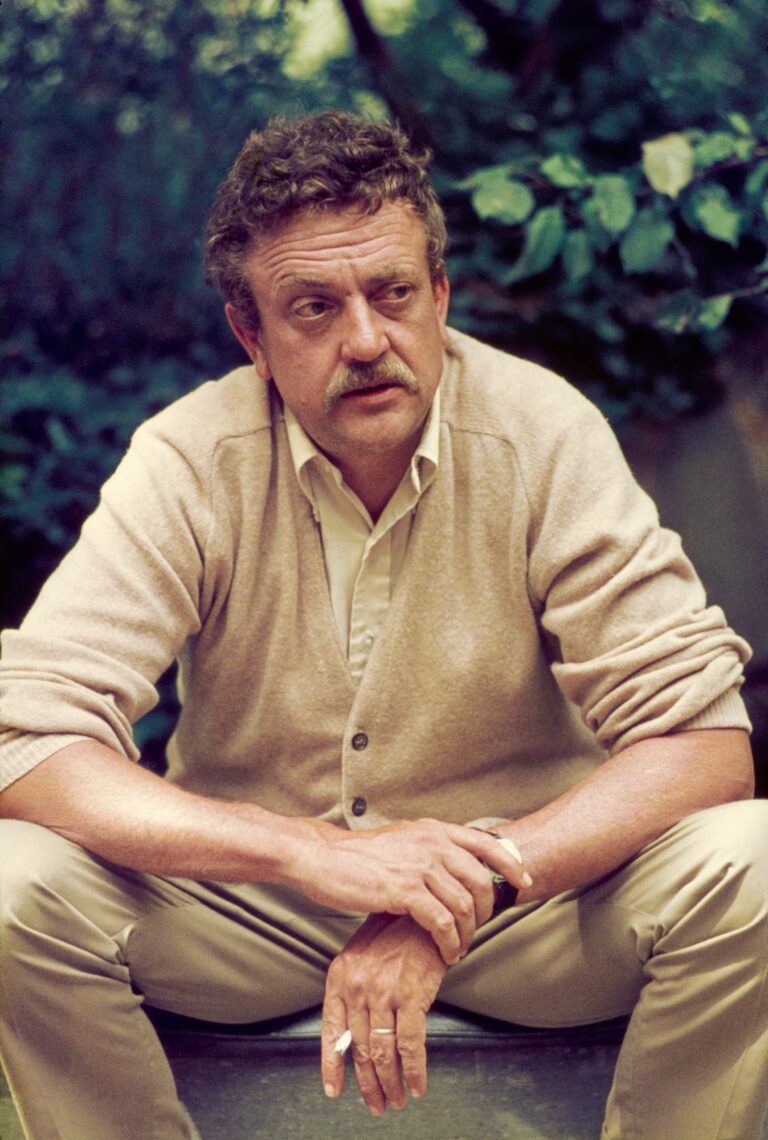Evanston RoundTable, June 7, 2022
Like all good things, it’s here and then gone. Enjoy it while you can.
But now it’s back, as if winter and summer have agreed, reluctantly, to pull aside the curtain and reintroduce us to this most delicious time of year. Even foreshortened, spring is grand, when nature reveals her most astonishing displays of vernal plenitude.

Spring bloomers include a bevy of wonderful plants: lilacs, irises, hyacinths, crocuses, roses, daffodils, narcissus, tulips, bluebells, poppies, peonies, scilla, Lily of the Valley and many more.
My favorites are lilacs, those perfumed shrubs thickly dotted with the pale purple-shaded flowers. They’re in bloom only a few weeks, but what a delight to stick your head in and inhale that heavenly scent.
“When lilacs last in the dooryard bloom’d/ And the great star early droop’d in the western sky in the night/
I mourn’d, and yet shall mourn with ever-returning spring,” wrote Walt Whitman in his great poem about Lincoln’s death. Is there a flower more beautifully immortalized?
Now that it’s No Mo No Mow May, lawns have once again resumed their brilliant-green crew cut. Now also is the season to discern and appreciate all shades green, from moss to shamrock to seafoam to crocodile to mint to lime and many more.
Spring is about hope, about growth, about youth resplendent: warm days and cool nights, before summer flies and mosquitoes and bees and other annoying little flying critters descend in force to nibble away at us.
Speaking of pests, right in the middle of our backyard garden we discovered a burrow of tiny bunny rabbits. I’ve rather enjoyed watching the wriggling creatures get a little bigger every day. But it brings great distress to my wife, the gardener, because when they finally emerge from their hole we know (from sad experience) they will cause havoc to many of her favorite flowers and plants.
“Fine,” I announce heroically, “I’ll dig them up and move them somewhere else.”
But she refuses to let me do that; she says Mama Rabbit wouldn’t know where her babies have gone off, and they would die without her daily sustenance. I shrug off her concern, volunteering to put up a sign for Mama to follow, but she ignores my feeble attempt at rabbit humor and says emphatically: No, it would be immoral to kill the durn critters.
It’s her garden, so I must abide.
Another seasonal treat is the floating white cottonwoods seeds. They loft majestically in the wind like some freak June blizzard, creating snowlike piles along Evanston curbs and fences.
Cottonwoods are interesting trees, the fastest-growing in North America – sometimes gaining more than six feet a year! But arborists warn that because they grow so quickly, cottonwoods are apt to topple over in a storm. Nevertheless, they are highly useful: honeybees use the resin as an antimicrobial and sealant.
Native American tribes and early settlers collected and used the bud scale resin as well, to soothe swollen arthritic joints and sore muscles and to waterproof boxes and baskets. “The bark was made into buckets for storing and carrying food. The leaves, buds and bark of cottonwood were used to lower fevers and reduce inflammation and pain,” according to the Salem (Oregon) Statesman Journal.
Another of spring’s highly welcome gifts is the much-longed-for return of song birds. Recently my wife and I learned about a bird-call identification app called Merlin. Created by the Cornell Lab of Ornithology, Merlin is easy to use: download the free app on your cell phone, press a button and aim it at the warbler in question. This spring we’ve been hearing a weird-sounding creature (bird? squirrel? cat?) in a tree on Colfax Street, which Merlin first identified as a brown-headed cowbird. With a name like that, as Smuckers used to say, it had to be good. Only it wasn’t. When I listened to a cowbird song on YouTube, it was clear Merlin was mistaken. Or more accurately, I had identified another bird that must have been warbling at the same time. Turns out, when I tried again, Merlin pegged the curious birdsong as that of a redheaded woodpecker.
What fun!
More fun: maple seeds are in full descent. We call them helicopter seeds, because they twirl down with their twin blades in fast rotation. I was thrilled to introduce them to the three-year-old daughter of our longtime next-door neighbors, who had moved to Texas but have returned to Evanston for a better job in a more enlightened state.
Sweet spring. Bitter sweet, actually, as the late Evanston resident Charlotte Royal wrote in her poem, Sans toi: “Spring is a burden of beauty / forsythia and yellow dawns / I carry brilliance in my days / and some few nights / but only for so long.” That sentiment speaks to me of the evanescent nature of beauty. Like all good things, it’s here and then gone.
This year it was barely here. Enjoy it while you can.




Love “sweet spring” and “second chance”.
So enjoyable to read your words. Thx.
What’s happening with the bunnies??
Love “sweet spring” and “second chance”.
So enjoyable to read your words. Thx.
What’s happening with the bunnies??